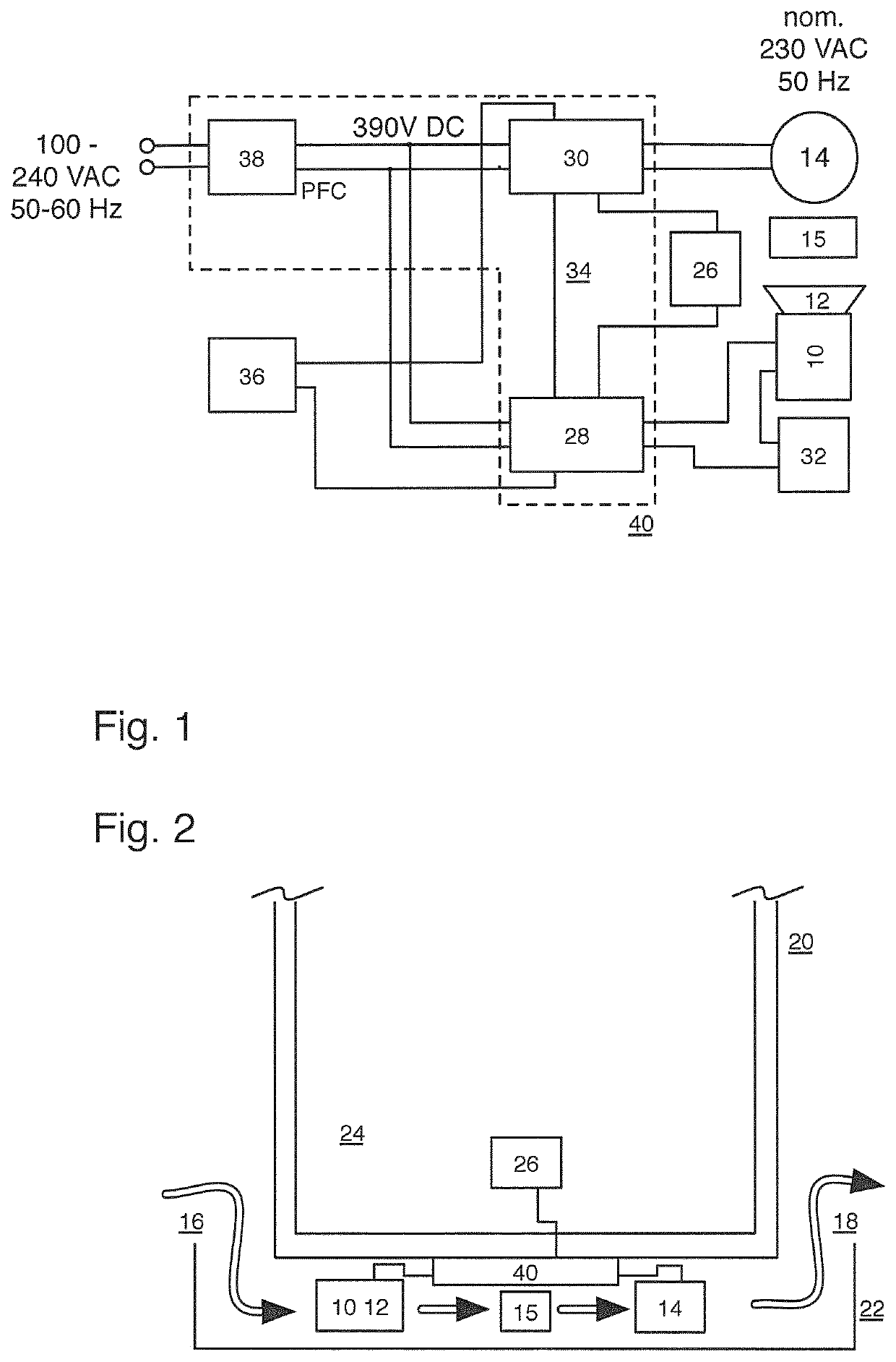Refrigerator fan device and ultra-low temperature freezer
a fan device and ultra-low temperature technology, applied in the direction of cooling fluid circulation, domestic cooling devices, lighting and heating devices, etc., can solve the problems of fan tip noise, disturbing noise, and often perceived disturbing noise of fan devices of this kind
- Summary
- Abstract
- Description
- Claims
- Application Information
AI Technical Summary
Benefits of technology
Problems solved by technology
Method used
Image
Examples
Embodiment Construction
[0021]As the schematic block diagram of FIG. 1 illustrates logically and functionally and as the geometrical illustration of FIG. 2 shows, a fan motor 10 realized as a brushless DC motor and having a fitted fan rotor 12 is placed relative to a heat exchanger (condenser) 15, which dimensioned for ultra-low temperature cooling purposes and includes a refrigerator compressor 14 of a cooling circuit (not shown), in such a manner that a cooling air flow generated by the fan rotor 12, coming from an inlet 16 (suitably covered by a fan grill, a filter or the like in a manner not shown) and conducted toward an outlet 18 can be applied from an ambient air environment of the refrigerator 20 schematically shown in FIG. 2. More precisely, said outlined air-conduction path 16-10-12-15-14-18 is formed in a bottom area 22 of a refrigerator housing of the refrigerator 20, which offers an interior 24 as a used cooling space for receiving cooled goods which, in the embodiment described, can be mainta...
PUM
 Login to View More
Login to View More Abstract
Description
Claims
Application Information
 Login to View More
Login to View More - R&D
- Intellectual Property
- Life Sciences
- Materials
- Tech Scout
- Unparalleled Data Quality
- Higher Quality Content
- 60% Fewer Hallucinations
Browse by: Latest US Patents, China's latest patents, Technical Efficacy Thesaurus, Application Domain, Technology Topic, Popular Technical Reports.
© 2025 PatSnap. All rights reserved.Legal|Privacy policy|Modern Slavery Act Transparency Statement|Sitemap|About US| Contact US: help@patsnap.com

